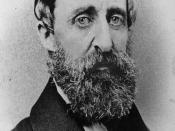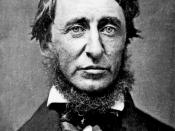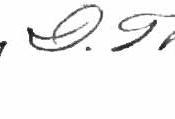Transcend-Symbolists: A Joining of Two Philosophies
By the mid nineteenth century, there had arisen two prominent groups of writers with very different philosophies, the Transcendentalists and the Symbolists. The Transcendentalists, among the ranks of which were Ralph Waldo Emerson and Henry David Thoreau, could be considered optimistic in their writing. The two most basic tenets of Transcendentalism (there were five all together) were that the individual is innately good and that nature was the purest place one could go. The Symbolists, which included such writers as Nathaniel Hawthorne and Herman Melville, on the other hand, were pessimistic, and tended to reject all of the ideas of the Transcendentalists. They believed that man tends toward evil and saw nature as an arbitrary force, neither good nor bad. While the beliefs of the Transcendentalists and Symbolists could be placed at opposite ends of the spectrum, neither group was completely right nor completely wrong, and the truth falls somewhere in the middle.
As stated above, the Transcendentalists had five basic beliefs. The are as follows: man is innately good, man is at his best when he refuses to conform to tradition, society was a source of evil, the purest place to which a person could go was nature, and that there existed the need for social reform. Not all of these ideas are inherently optimistic on their own, but as a whole they are. Where they say evil in society, they also saw the potential for reform. They saw a grim present but sought a brighter future. Throughout their writings, they explained their point of view. They told people what they saw was wrong, and told people how they might endeavor to make it right. These view truly were optimistic.
Yet they could not see through all this optimism and find...


